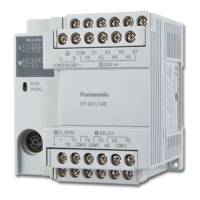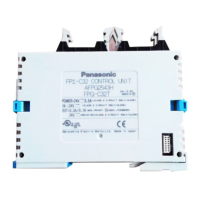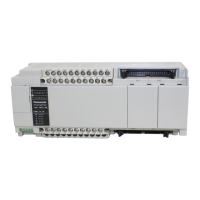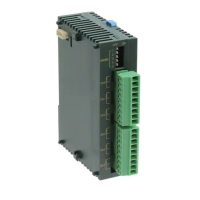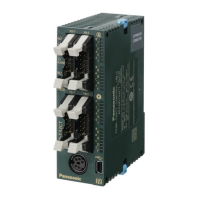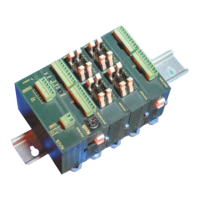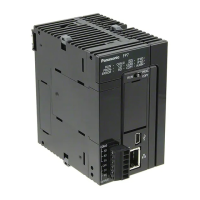Pulse output instructions
1065
Part III FP Instructions
General programming information
!
Warning!
As soon as you begin editing a program online (i.e., in
RUN mode) using this instruction, pulse output will
stop.
If both the main program and the interrupt program contain code for the same
channel, make sure both are not executed simultaneously.
When a pulse output instruction is executed and pulses are being output, the
pulse output control flag (e.g. sys_bIsPulseChannel0Active) of the corresponding
channel is TRUE. No other pulse output instruction can be executed as long as
this flag is TRUE.
Changing the control code during execution of the instruction will have no effect.
We strongly recommend that you incorporate a forced stop (see page 1021)
option in you
r positioning p
rogram.
The status of the high-speed counter control flag or pulse output control flag may
change while a scan is being carried out. For example, if the flag is used more
than once as an input condition, different statuses may exist within one scan. To
ensure proper execution of the program, the status of the special internal relay
should be copied to a variable at the beginning of the program.
REFERENCE
Please refer to the FPWIN Pro online help for detailed information on using system variables.
Output relays and system variables for FP0R
PLC types Availability of F172_PulseOutput_Jog (see page 1322)
Variable Data type Function
s_dutDataTable
FP-
, FP-X:
F172_PulseOutput_Jog_Type0_DUT_0
F172_PulseOutput_Jog_Type1_DUT_0
FP0R:
F172_PulseOutput_Jog_Type0_DUT_1
F172_PulseOutput_Jog_Type1_DUT_1
Starting address of area containing the data
table
n_iPulseOutputChannel decimal constant Pulse output channel:
FP-
: 0, 2
FP-X R: 0, 1
FP-X C14T: 0, 1, 2
FP-X C30T/C60T: 0, 1, 2, 3
FP0R: 0, 1, 2, 3
Data types
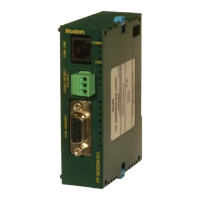
